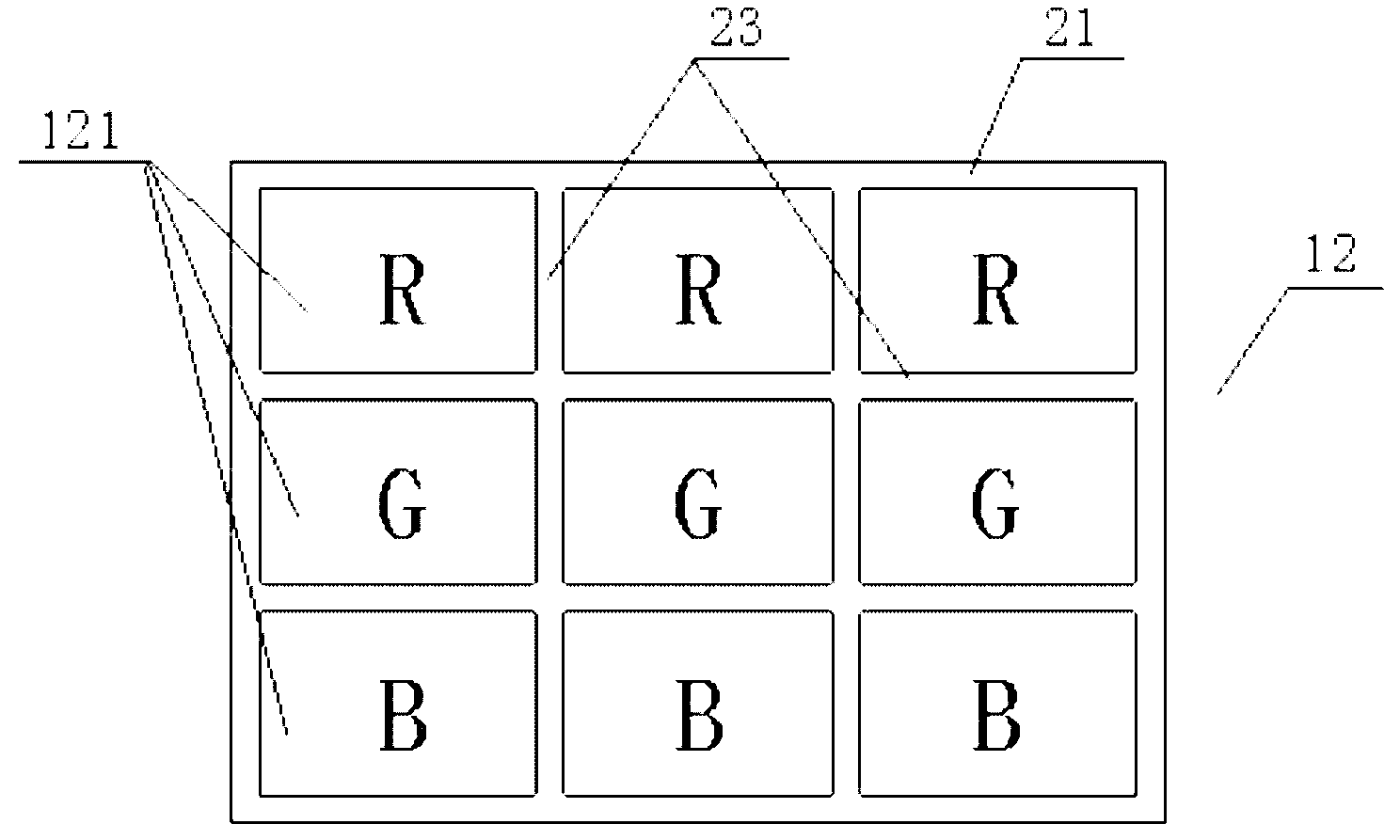Low-power-consumption laser cathode ray tube (CRT) based on laminar flow electronic gun, and projection system
An electron gun and low power consumption technology, which is applied in the electronic field, can solve the problems of uneven power consumption in the light-emitting area, reduce the average life of the chip, and have a large energy ratio, and achieve the effects of cheap configuration, elimination of laser speckle, and uniform current density
- Summary
- Abstract
- Description
- Claims
- Application Information
AI Technical Summary
Problems solved by technology
Method used
Image
Examples
Embodiment approach 1
[0076] Implementation Mode 1: Refer to Figure 5 , Three laser CRT1 respectively provide red, green and blue laser light sources. Each laser CRT1 has an electron beam current control system 14 to control the control electrode 133, and then through an appropriate X prism, the laser light source generated by each laser CRT1 is coupled and shaped, and then projected onto the screen 6 through the optical projection system 5, Form full-color images. In order to achieve the ideal color balance of the projected image, the control electrode 133 of each laser CRT 1 can be individually controlled through the electron beam current control system 14 . This adjustment can be done manually, such as by allowing the user to individually control each laser CRT1. Automatic feedback via sensors is also possible so that the beam current control system 14 automatically adjusts the desired color balance.
Embodiment approach 2
[0077] Implementation mode two: refer to Figure 6 , Three laser CRT1 respectively provide red, green and blue laser light sources. The three laser CRT1s are respectively modulated by the light modulator 7, then coupled and shaped by an appropriate X prism, and then projected onto the screen 6 through the optical projection system 5 to form a full-color image. In order to achieve the ideal color balance of the projected image, each laser CRT1 can be individually adjusted through the electron beam current control system 14 . This adjustment can be done manually, such as by allowing the user to individually control each laser CRT1. Automatic feedback via sensors is also possible so that the beam current control system 14 automatically adjusts the desired color balance.
Embodiment approach 3
[0078] Implementation Mode Three: Refer to Figure 7 , the projection system only uses one laser CRT1, and one laser CRT1 can generate three parallel laser light sources, each of which is one of the three primary colors. The combination of three laser light sources through the optical prism group 4 forms a beam of three-color synthetic light. The above design effectively saves the number of laser CRTs and reduces the space and cost of the projection system. use Figure 7 When the laser CRT1 is shown, the laser CRT1 should have the following design: refer to image 3 , the laser panel 12 is provided with three rows of laser cavities 121, and the first row of laser cavities 121 uses red laser cavities 121 in the three primary colors, marked as R. The second row of laser cavities 121 adopts green laser cavities 121 in the three primary colors, marked as G. The third row of laser cavities 121 adopts the blue laser cavity 121 of the three primary colors, marked as B. A panel m...
PUM
 Login to View More
Login to View More Abstract
Description
Claims
Application Information
 Login to View More
Login to View More - R&D
- Intellectual Property
- Life Sciences
- Materials
- Tech Scout
- Unparalleled Data Quality
- Higher Quality Content
- 60% Fewer Hallucinations
Browse by: Latest US Patents, China's latest patents, Technical Efficacy Thesaurus, Application Domain, Technology Topic, Popular Technical Reports.
© 2025 PatSnap. All rights reserved.Legal|Privacy policy|Modern Slavery Act Transparency Statement|Sitemap|About US| Contact US: help@patsnap.com



